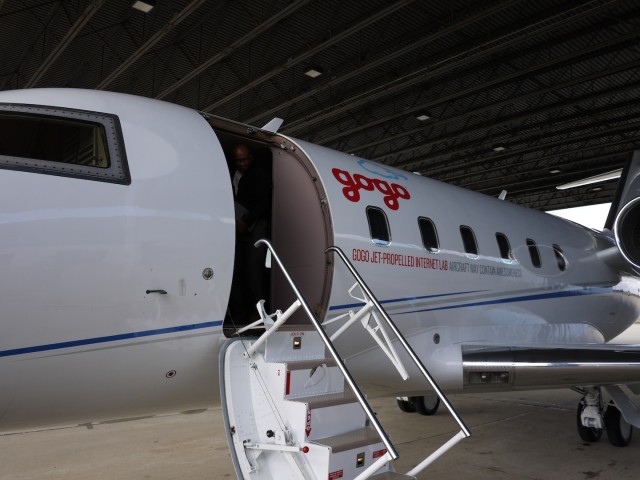
Gogo’s Test Plane – Photo: Gogo
Gogo announced today significant new technology upgrades that will boost the speed and enhance the reliability of their in-flight wifi service. These upgrades will be rolled out first with Virgin America (VX) in 2014, who also happened to be the first customer to introduce Gogo service fleet-wide, and the first to implement the enhanced ATG-4 high-speed service.
The essence of the new technology is a refined antenna that utilizes a “GTO” protocol (or “Ground-to-Orbit”). This system will build upon Gogo’s existing ground-based antennas to utilize multiple satellites for enhanced speed and reliability. Gogo claims upwards of 60 Mbps speeds to planes running their service. That’s up to 20x faster than what you can expect on most planes equipped with Gogo right now.
Another benefit of the new antenna is that it can communicate with multiple satellites at once, which increases stability. If one connection fails, another can pick up the slack. This will hopefully prevent what happened on my last Gogo-equipped flight; a 20-minute loss of coverage in the middle of writing an AirlineReporter.com story.
Virgin America held a press conference at Newark International Airport on Monday, celebrating the beginning of service from the New Jersey airport out to the West Coast. Newark International lacks much competition to the west coast, and Virgin Americas introduction to the airport has already started to lower costs on transcontinental routes, while passengers “fly like a boss.”
“This day is a great day for our company, but it poses a huge challenge for me,” said David Cush, CEO of Virgin America. “For five years, when the media would ask me ‘what is the number one airport on the top of your list that you want to fly to,’ its always been easy, its been Newark Airport, and now I need to come up with a new number one,” Cush remarked. “It was an under-served airport from the Bay Area, and if you look at the importance of Newark, it is the number two business market out of San Francisco after JFK,” added Cush. After just one week of service, Cush said that fares have dropped by 40 percent on those routes.
Leading up to beginning of service from Newark, Virgin America held a content called “Fly Like A Boss,” where contestants chose the name for a brand new Airbus A320. The winning name for the aircraft was “Jersey Girl.”
Also in attendance at the press conference was the legendary Richard Branson. “Five years ago, we started Virgin America, and the first place we wanted to fly from was Newark, but we couldn’t get any slots,” said an enthusiastic Branson. Later on in his speech, Branson joked about the rather dull appearance and features of Newark’s terminal A. “Another announcement today,” Branson claimed. “I’ve just had a word with the wonder people behind me, and they’re going to make this terminal look beautiful. So it’s going to be beautiful, no queuing to go through, no security and all that, and it’s going to be the best terminal at Newark, so that’s something to look forward to. We’re going to come back in 12 years time to celebrate this,” said Branson. Sadly, this probably won’t happen any time soon.
-
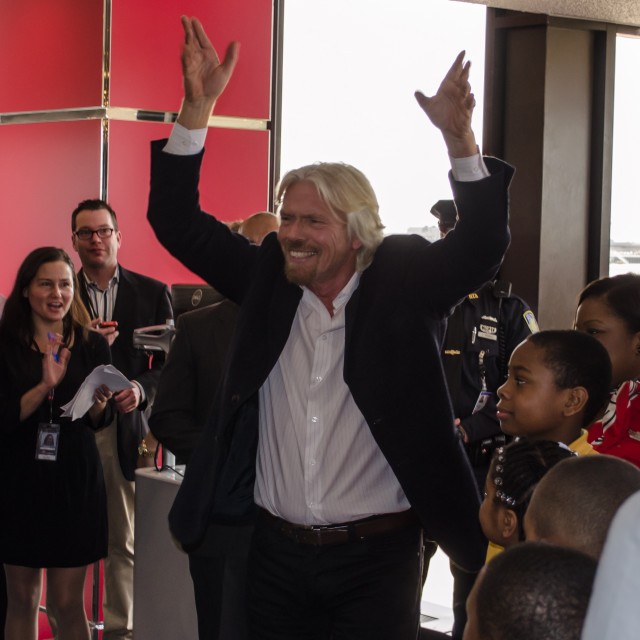
-
Richard Branson Says Hello
-
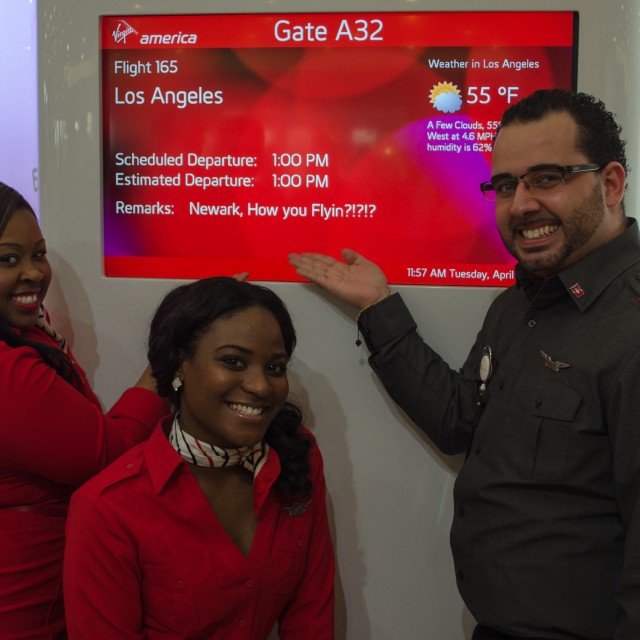
-
Newark, How You Flyin?!?!?
-
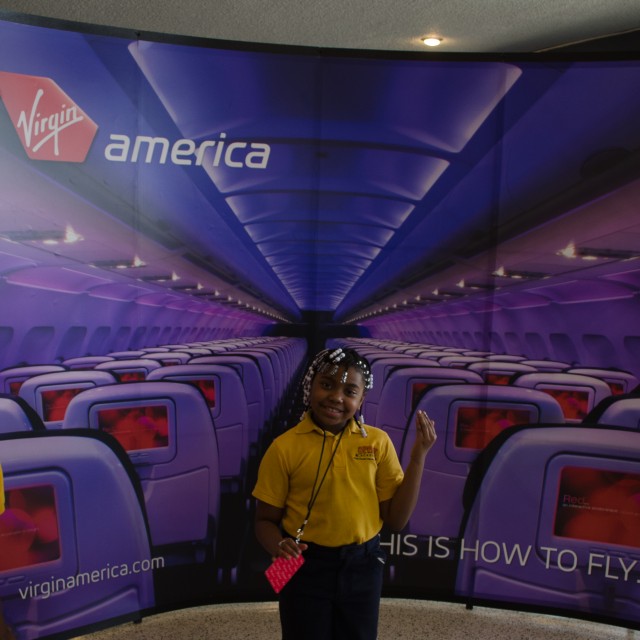
-
All The Kids Love Virgin America
-
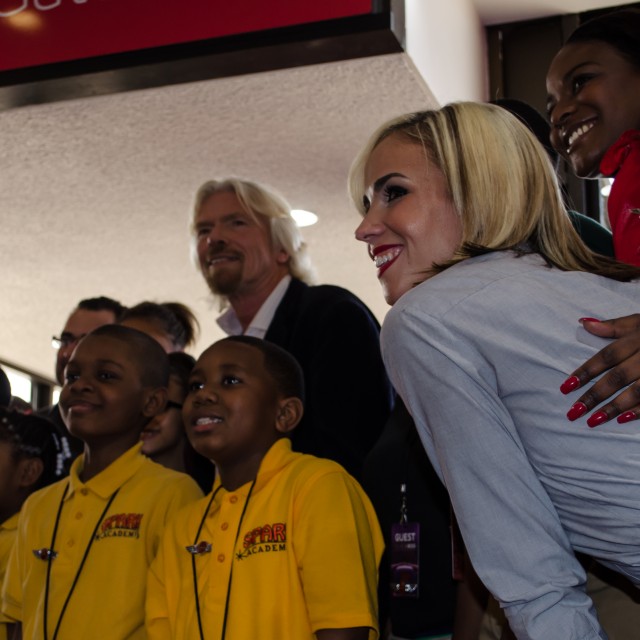
-
Group Shot
-
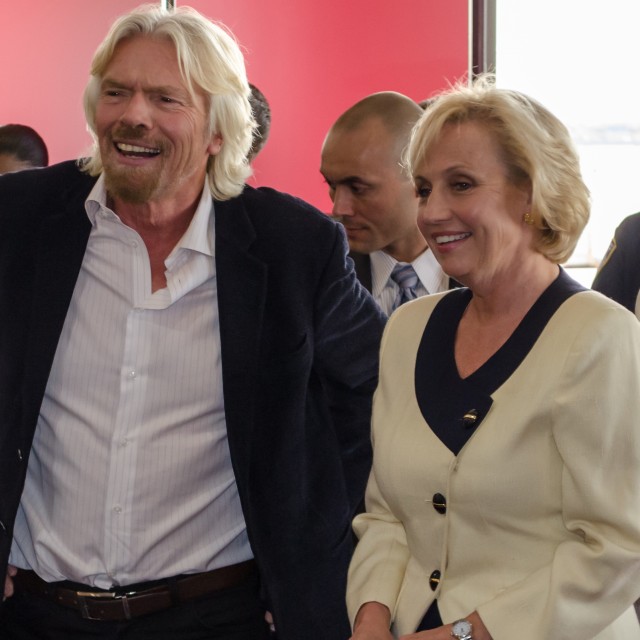
-
Lt. Governor Kim Guadagno
-
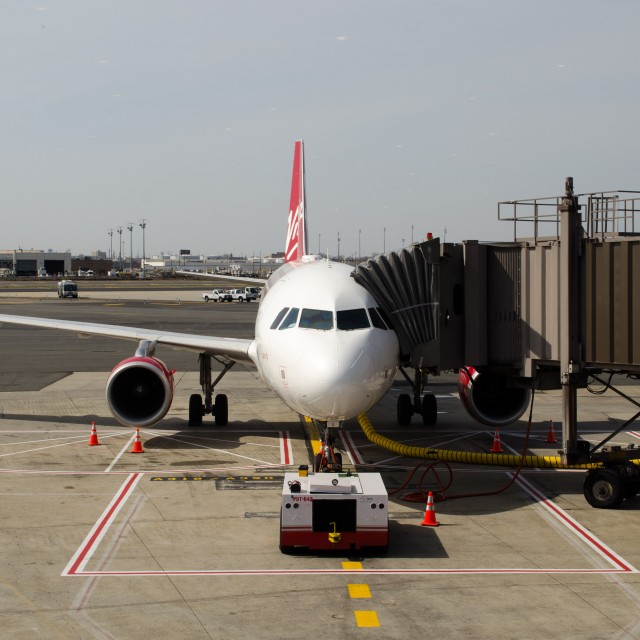
-
Virgin America A320
-
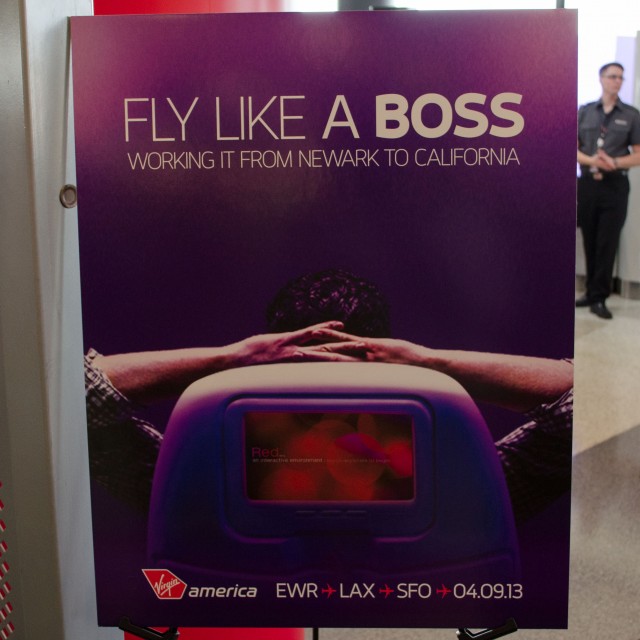
-
Fly Like A Boss
-
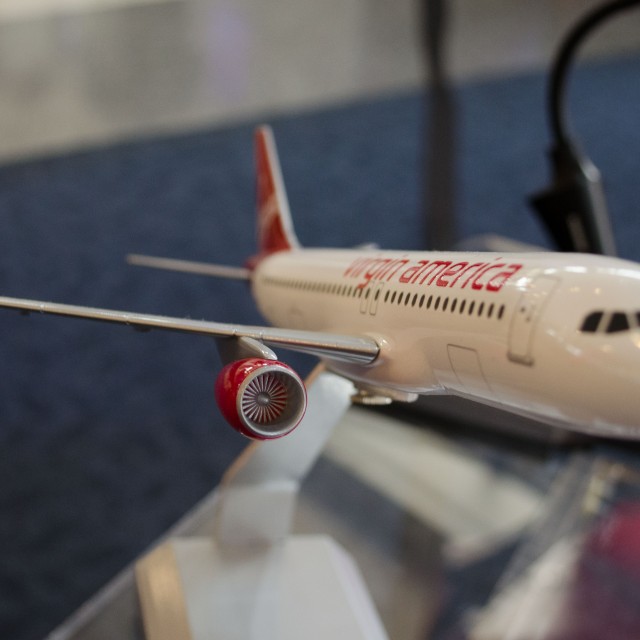
-
Virgin America A320 Model
-
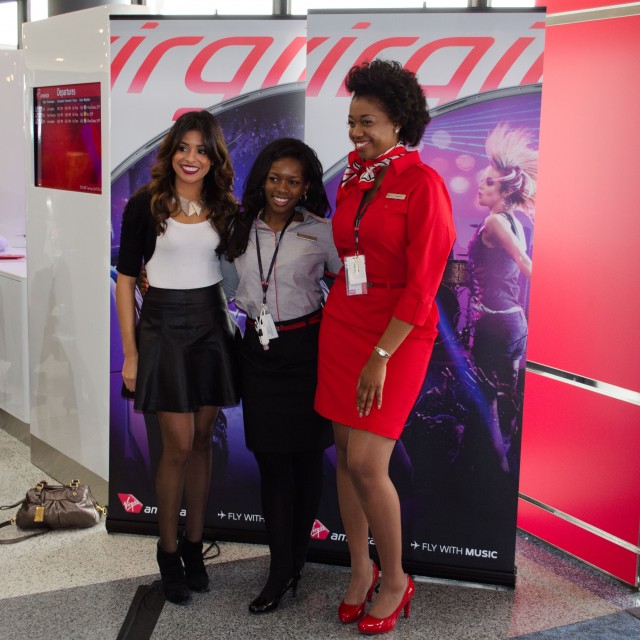
-
Group Photo
-
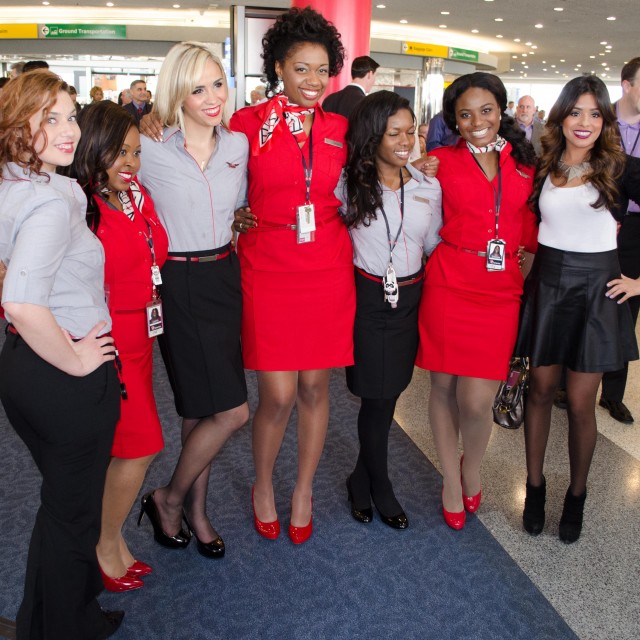
-
Group Photo
-
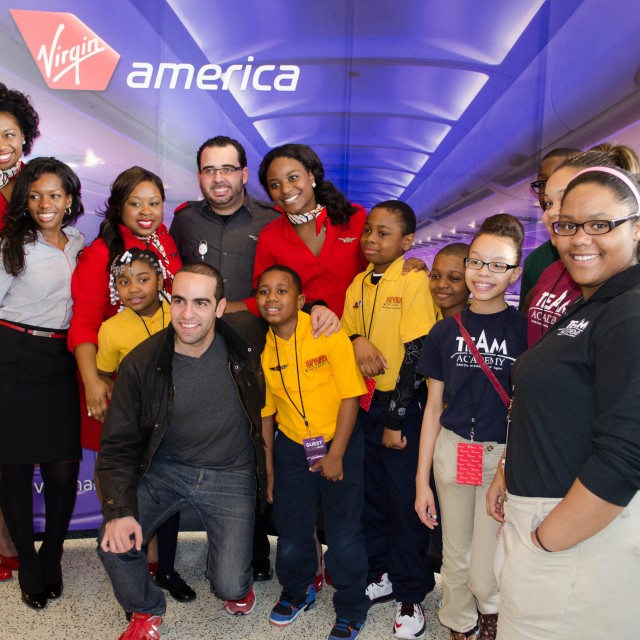
-
Group Photo
-
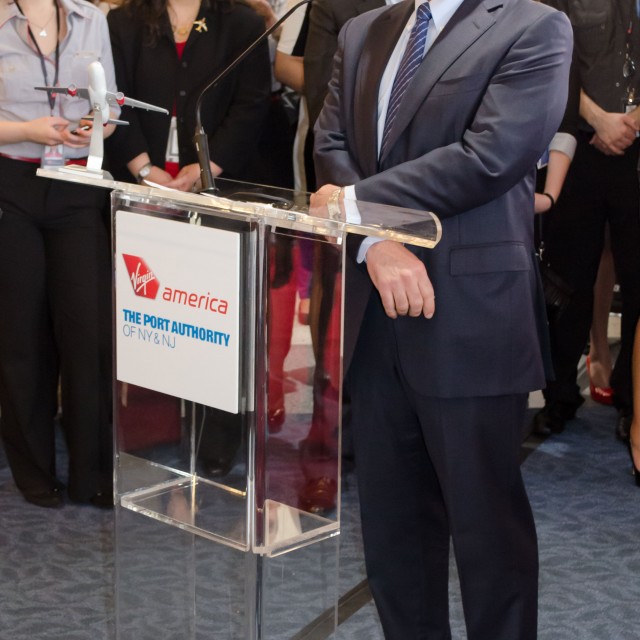
-
Virgin America CEO David Cush
-
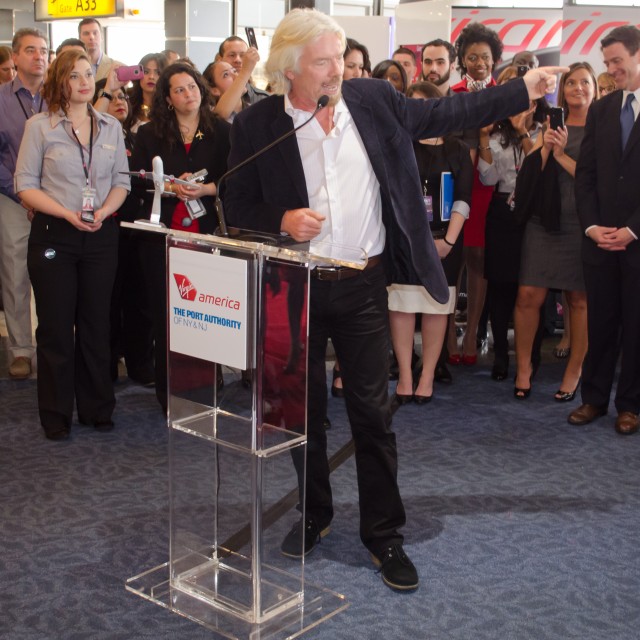
-
Richard Branson points at something.
-
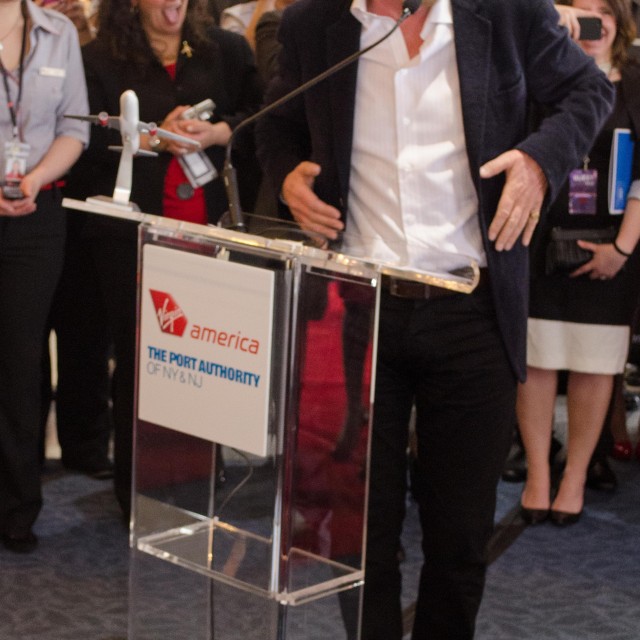
-
Richard Poses
-
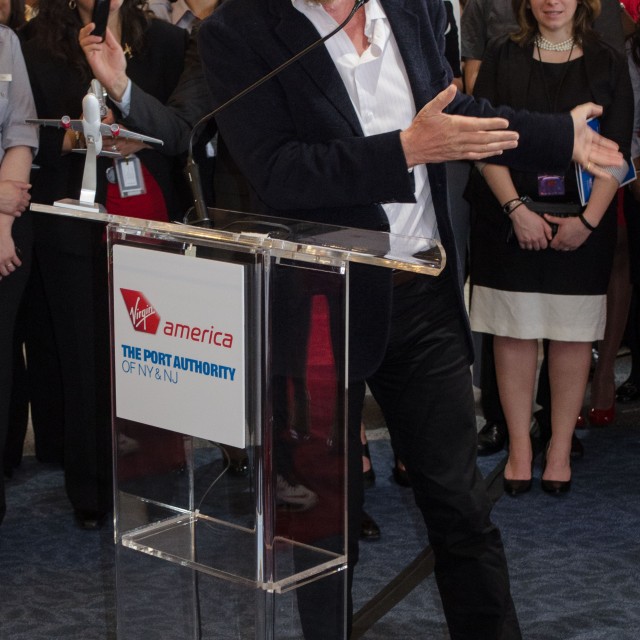
-
Richard Poses
-
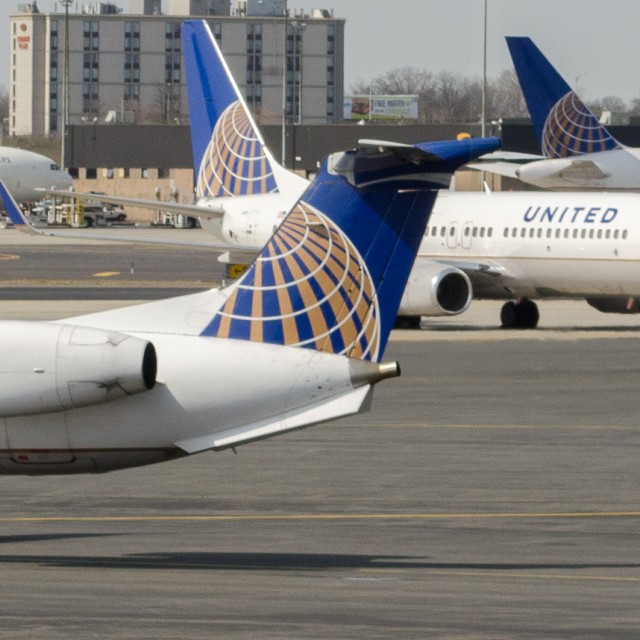
-
The competition lurks right outside the gate window
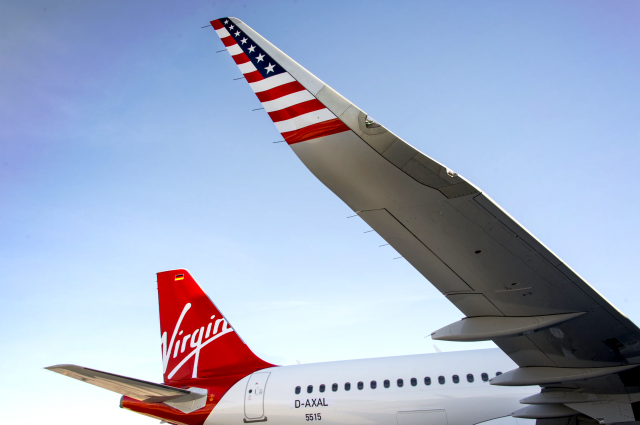
The First Virgin America A320 With Sharklets
At Virgin America’s Newark Airport inaugural celebration this week, I had the opportunity to sit down with CEO David Cush for AirlineReporter.com. While talking about their new Airbus A320 with Sharklets, Cush detailed his airlines future plans for flights to Hawaii.
Jason: ’œYou just took delivery of your first A320 with Sharklets, when do you expect that to enter into service?
Cush: ’œIt should be in about two weeks, let’s call it around April 25th or so.’
Jason: ’œDo you have any idea which route it will be flying initially?’
Cush: ’œIt’ll be flying some of the longer routes, because of the efficiency, so probably San Francisco-Boston, San Francisco-JFK. We took delivery of that one in Hamburg, and it was a beautiful airplane on the way over. Our chief pilot flew it over, and we actually saw greater than 4 per cent efficiency from Sharklets. So they estimated 3.5, we saw a little bit over 4.
Jason: ’œHow do you estimate that will impact your operations?’
Cush: ’œWe fly these aircraft kind of at the edge of their performance. When we’re flying Boston to San Francisco, in the winter and into headwinds, that’s about all that aircraft can do. Now what we got is an airplane that can do that easily without weight restrictions. So it’s not only a fuel efficiency thing, it’s a performance thing.
Jason: ’œI know that JetBlue had taken delivery of the first production retrofit a couple of months ago, and they have been doing that exact route, and they report that they have to make fewer tech stops to refuel. Do you anticipate less stops or was that a problem initially without Sharklets?>
Cush: ’œWe don’t take tech stops. If we’ve got a long flight plan or strong winds, what we do is we basically buy passengers off the airplane. So, rather than inconveniencing everyone, what we’ll do is will find people to buy off, and they’ll wait for the next one. We take very few tech stops, usually when it’s an unplanned change. But what this will mean is that we will never have to take passengers out of the aircraft again.
Jason: ’œHow often do that [buying passengers off the flight] happen right now?’
Cush: ’œI would say during the dead of winter, with a bad jet stream, I would say maybe as much of 10 per cent of the flights out of Boston.
Jason: ’œDo you anticipate the impact of Sharklets being able to open any new routes in the future?
Cush: ’œThe main thing is that it lets you do West Coast to Hawaii, and that’s something you can’t do with the current aircraft. And so we’ll be using Sharklet equipped airplanes in 2015 when we start flying to Hawaii, and we can’t do that without the Sharklets.
Jason: ’œAre there any plans to retrofit current aircraft with Sharklets?’
Cush: ’œWe’re going to wait and see. You know, there’s a lot of work you have to do on the wing, a lot of weight you add to the aircraft, which is a little bit of a challenge for us. We like the fuel efficiency, we don’t like the additional weight, so we’re not in a big hurry to do it. I know JetBlue is really blazing that trail, we’ll probably just sit back and see what their experience is, and if it’s good, we’ll probably go ahead and do the same thing.
Jason: ’œAll future deliveries of Airbus aircraft at this point, will they be Sharklet equipped?
Cush: ’œAll of ours will be. We’re not taking any more airplanes until 2015, and then we’ll take 10 from 2015 to 2016.
 |
This story written by… Jason Rabinowitz, Correspondent.
Jason is a New York City native who has grown up in the shadow of JFK International Airport. A true “avgeek”, he enjoys plane spotting and photography, as well taking any opportunity he can get to fly on an aircraft.
@AirlineFyer | FaceBook |Virgin America, Sharklets, Hawaii |
It is that time of year again for airlines and organizations related to aviation to come out with crazy stories for it being April Fools’ Day. Once again, we will try and track them down and share them. If you see others that are not covered here, leave something in the comments.
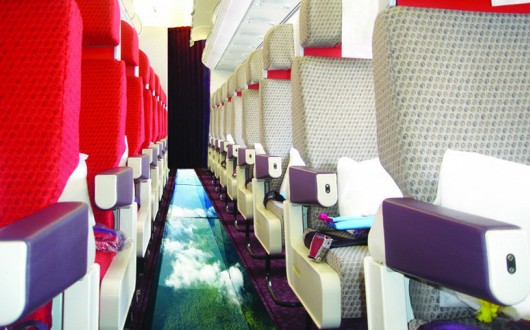
This is something that AvGeeks might like, but probably not most passengers. Image from Virgin Atlantic.
VIRGIN ATLANTIC TO OFFER SEE-THROUGH FLOORS:
From Richard Branson: I’m thrilled to announce that Virgin has created another world-first with the introduction of the technology required to produce the world’s first glass-bottomed plane. This technological innovation coincides with the start of Virgin Atlantic Airways’ first ever domestic service to Scotland.
In 1984 we started the wonderful airline that is Virgin Atlantic. I am incredibly proud of yet another aviation breakthrough which has been years in the making. I can’t wait to experience the first flight for myself with my family and other natural born explorers.
Read more and see some pretty sweet mock-up photos…
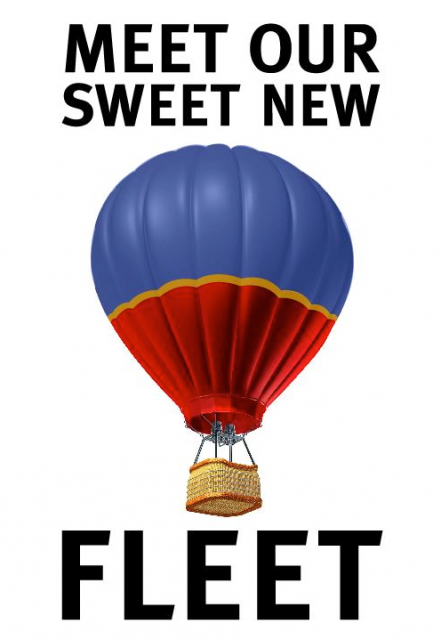
Take a Southwest Airlines hot air balloon. Image from Southwest Airlines.
SOUTHWEST AIRLINES ADDS HOT AIR BALLOONS
From the airline: When you’re flying nearly 500mph at 35,000 feet above ground, life passes by pretty fast. Sure, Southwest has a suite of things to keep you entertained inflight: Video on Demand; WiFi; Live at 35; hilarious Flight Attendants. Heck, we’ve even transported a miniature seeing-eye horse, and a couple endangered sea turtles. But figuratively, you can’t have the hare without the tortoise.
Realizing the possibility that slow and steady may truly win the race, the answer became clear: it was time to float the grandest idea Southwest has ever had. It was time to take things slow. The tortoise and the hare. Hot air balloons and Boeing 737’s, soaring fancy free, albeit at distinctly different altitudes, and at significantly separate speeds.
Read more…
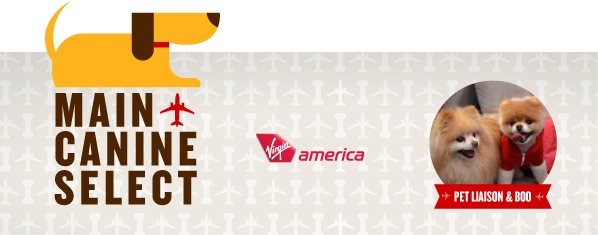
Flying does not have to be “ruff” any longer. Image from Virgin America.
MAIN CANINE SELECT WITH VIRGIN AMERICA
From the airline: We’re of the mind that man’s best friend shouldn’t get the raw deal when flying long distances, so we partnered with Boo, World’s Cutest Dog and our very own Pet Liaison to throw furry flyers a bone. Over the last year (and with Boo’s doggy design expertise) we’ve converted our first class cabin into a space as tricked out as our state-of-the-art digs at SFO’s Terminal 2.
See more images and learn more…

JetBlue adding more destinations? Probably not really these ones. Image from Jeremy Dwyer-Lindgren.
JETBLUE FLYING TO THREE NEW DESTINATIONS
From the airline: We’re excited to announce three tantalizing new destinations, expanding this fun-loving airline’s borders to three new countries and giving travelers more options for flying to some of the farthest-reaching dots on the globe, including:
- April River Airport (APR) in Papua New Guinea;
- Ilford Airport (ILF) in Manitoba, Canada; and
- Gold Coast Airport (OOL) in Coolangatta, Australia
Customers looking to climb an active volcano in Rabaul Caldera, experience a new sub-zero Canadian vacation spot or visit their Coolangattan relatives can now hop a flight with their favorite, customer service-friendly carrier. Once-daily flights to all three new destinations will be offered from our existing stations in Portland, Maine and Aquadilla, Puerto Rico. Twice-weekly flights will also be offered between Papua, New Guinea and Coolangatta, Australia with connecting service in Ilford, Canada(a).
Keep reading and see video…
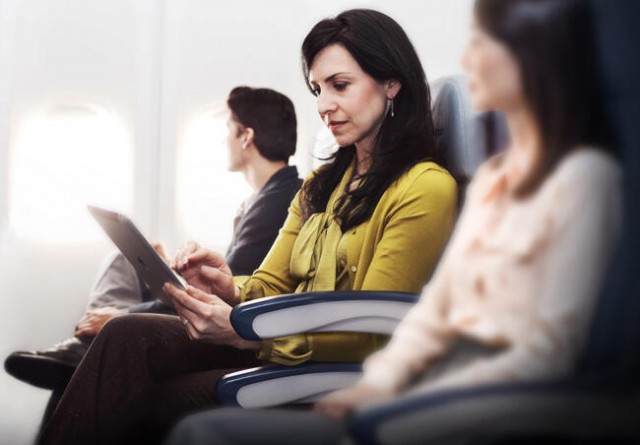
More room for the arms. Image from Delta.
DELTA DOUBLE DECKER ARM REST
Posted on Delta’s Twitter account: Introducing the new Double Decker Armrest coming soon to the middle seat. More arm space. Less elbow rubbing.
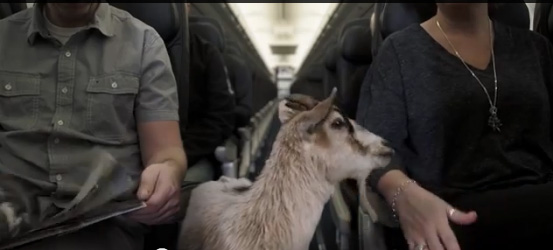
WestJet’s new animal policy might be a Baaaaad idea. Image from WestJet’s video.
ALL ANIMALS ON BOARD WESTJET
From the airline: WestJet today announced the easing of restrictions on pets in the cabin. All WestJet flights will now allow for any type of animal to travel in the cabin provided it fits safely on board the aircraft.
“We recognize that a growing number of families want to travel with their ‘extended’ family and we are proud to be the first airline to offer this type of service,” said Richard Bartrem, WestJet’s Vice-President, Communications and Community Relations.
Thanks Allen for finding this one.
Be sure to check out WestJet’s video…
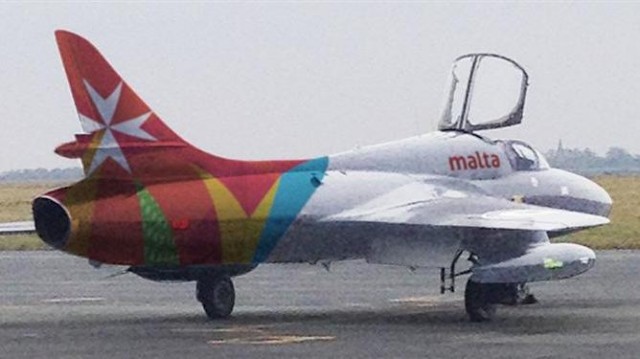
Air Malta to buy a Hawker Hunter?
AIR MALTA BUYS A FIGHTER JET
From the Malta Independent: Air Malta has bought a 1950s privately owned two-seater Hawker Hunter fighter jet. The historic airworthy military aircraft will be painted in Air Malta’s new livery and will be used to generate new revenue streams for the airline. The aircraft will also be used to promote Air Malta and the Maltese Islands abroad by participating in a number of air shows around the world.
Plans have already been made by the airline for a soon-to-be-launched novel product ’˜Jet Fighter Adventure Flights’ – an adrenalin rushing thrill seeking fighter aircraft experience that has become very popular in several countries around the world. These flights-of-a-lifetime will be available for purchase on the airline’s website www.airmalta.com.
With its sleek design, brilliant handling and maneuverability, the Hawker Hunter aircraft will offer customers the opportunity to experience a historic flying adventure. The classic Hunter was one of the best transonic jet fighter aircraft and formed the backbone of the Royal Air Force’s jet fighter squadron in the late 1950s. The aircraft was withdrawn from active service in 1995. During the 1960s and 1970s Hawker Hunter aircraft were a common sight at Malta’s Luqa airfield.
Keep reading…
PREVIOUS AIRLINE JOKSTERS:
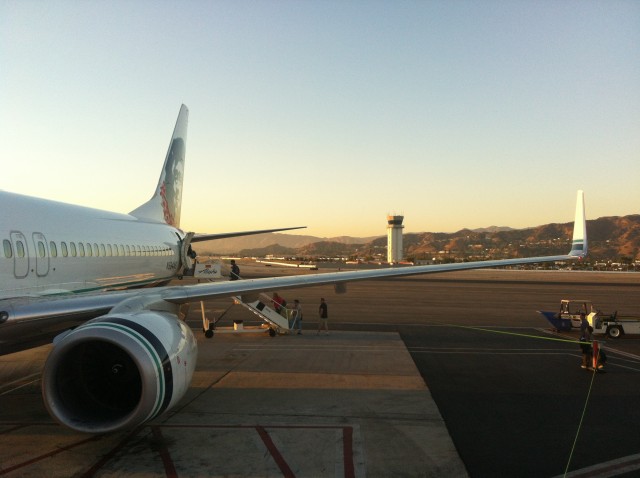
Boarding an Alaska Airlines Boeing 737 at Burbank. Image by Colin Cook.
It used to be that most major airlines shared commonalities in the way they boarded passengers. However it seems that each airline has so their own boarding processes that it’s hard to keep up. Sure, the way an airline boards likely won’t sway a decision on which airline to fly, I wanted to put together a list of how some of the major airlines operate their boarding process.
As one would expect, the majority of airlines give priority boarding to their elite level fliers. Having personally achieved even a low level MVP with Alaska Airlines I can say that I would never want to go back to being just ’œone of the herd.’ While I haven’t gone on a ’œmileage run’, there are many well documented stories of folks taking a quick trip just for the sake of achieving elite-level status.
With precious overhead space and many airlines now charging for checked luggage it’s become a race to get on board as early as possible. While some low cost carriers are now charging for carry-on bags, the major US airlines typically allow one carry-on bag (i.e. a roller bag or other bag for the overhead bin) and one personal item (laptop bag, purse, backpack, etc). Since many travelers are now bringing a large carry-on bag, boarding times have soared. An article in the New York Times suggested that boarding a plane with 140 people in the 1970’s took about 15 minutes which has more than doubled to 30-40 minutes.
Without further adieu, here is how the various airlines handle their boarding procedures (a small note: these are all the boarding requirements as found by AirlineReporter.com at the time of publishing. These change frequently, so please add any changes/ideas to the comments and listen to all gate announcements for proper boarding proceedures):
How does Air Tran board? ’“ This airline’s boarding procedures will undoubtedly change as the integration into Southwest takes place over time. Southwest operates a 737 only fleet and is in the process of subleasing Air Tran’s Boeing 717 planes to Delta. Presently, Air Tran pre-boards unaccompanied minors, passengers traveling with an infant, and passengers needing special assistance prior to general boarding. Like many other airlines, Air Tran utilizes a zone boarding process.
How does Alaska Airlines board? ’“ Being based in the Pacific Northwest, I fly Alaska more than any other airline. Their boarding process is pretty straightforward. They don’t mess around with zones or boarding groups and have a seemingly more streamlined approach. They begin with preboarding ’“ those customers who are traveling with children or need some additional time to get down the jet way. After preboarding, they invite First Class, Alaska Airlines MVP and 75k elite level fliers. Next are passengers seated in row six of the main cabin (bulkhead row at the front of economy) and Alaska MVPs and partner elites. After that, they board from the rear of the plane starting with passengers seated in row 15 and higher. Finally they open to general boarding at that point. It’s a pretty well organized system and tends to work well.
STORY: Flying First Class on Alaska Airlines
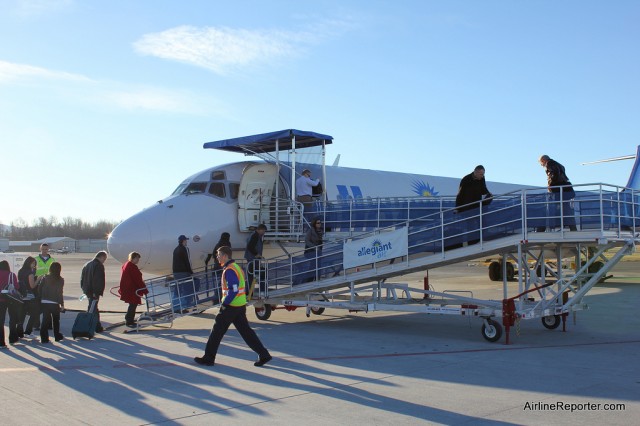
Boarding an Allegiant MD-80 in Bellingham. Image from David Parker Brown / AirlineReporter.com.
How does Allegiant board? ’“ Allegiant offers many different add-ons to their standard fare and does a nice job of providing ala carte service where you can add additional services to their basic fare. Among their options are Priority Boarding for $9.99 (allows you to board first), Premium Seat Selection $9.99 (an assigned seat near the front or exit row), Standard Seat Assignment $6.99 (assigned seat towards the back of the plane). You can certainly opt to fly without paying any of those additional fees, but be prepared to sit in a middle seat. Their boarding process allows people that paid for priority boarding to board first, followed by those who need a little extra time. Then passengers who paid for the standard seat assignment are allowed to board followed by those who do not have seat assignments but have young children. Lastly it goes to open seating and people get to fend for them self to find an open seat.
STORY: Flight review flying Allegiant Airlines
How does American Airlines board? ’“ American is one of the airlines that actually disclose their boarding process on their website. Many airlines do not give a specific process but simply expect you to pay attention when you get to the airport. American employs a process similar to most of the other legacy carriers in that they give priority to elites and then general boarding. Their process consists of preboarding First Class, Uniformed Military, AAdvantage Executive Platinum, and oneworld Emerald. On aircraft with three class service, Business Class is boarded next. The next group consists of AAdvantage Platinum and oneworld Sapphire, followed by Priority AAccess and oneworld Ruby. From there, American is in the home stretch boarding groups 1-4. Of course this could all be changing with the airline merging with US Airways.
STORY: Taking American’s 737 Sky Interior Delivery Flight
How does Delta Air Lines board? ’“ The world’s largest airline by passengers carried and fleet size has developed a good reputation among both business and leisure travelers. They utilize a zone boarding process similar to many of the other large airlines. They first offer preboarding to their Sky Miles Medallion elite level fliers (Diamond, Platinum, and Gold) and passengers traveling in the first class cabin. On international flights they then invite passengers traveling in BusinessElite, Sky Miles Medallion Silver frequent fliers, and partner elites to board. Delta then begins general boarding via a zone process beginning from the rear of the aircraft. Depending on the size of the plane and whether it is an international or domestic flight, Delta can have as many as nine different boarding groups.
How does Frontier Airlines board? ’“ Denver’s hometown airline has been undergoing some big changes in recent years. Frontier uses a zone boarding style similar to many other carriers, beginning with preboarding for passengers with special needs, which include passengers who need assistance and unaccompanied minors. Similarly to Jet Blue’s Silent Boarding group, they do not announce a special boarding for this group. The one nice thing is that you don’t have to make a reservation in advance for the extra time, whereas you do on Jet Blue. Frontier then invites their Summit Members to board which is the top tier of their EarlyReturns frequent flier program. They then begin priority boarding and Zone 1 which includes Ascent members (second tier of EarlyReturns), as well as people traveling on a Classic Plus fare or seated in Stretch seating. Next, they invite families with small children and passengers requiring additional time or assistance to board. They also have a separate boarding group here for people who are not utilizing overhead bins (it pays to pack lightly). After that, they begin boarding with Zone 2, which are passengers in Select seating. Finally, they board Zone 3 which is pretty much anyone else. So while Frontier technically only has three zones, they really have seven different boarding groups.
STORY: Review flying Frontier Airlines to Denver and back
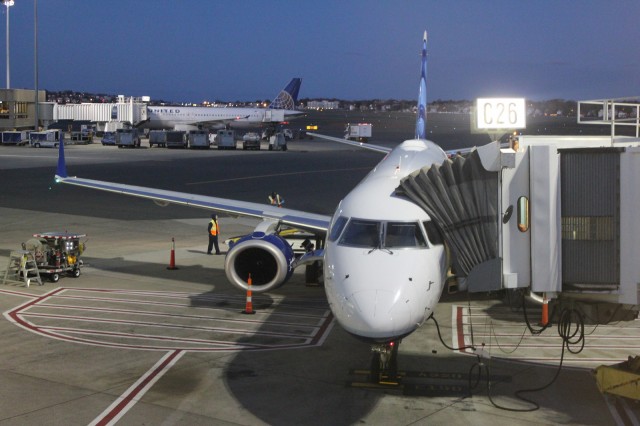
A JetBlue E-190 in Boston. Image from David Parker Brown / AirlineReporter.com.
How does JetBlue board?’“ As is typically true with most things JetBlue, they try to keep their boarding process simple. They begin with pre-boarding which they call Silent Boarding. This is a service that must be requested in advance and is designed for people who have requested or appear to need additional time boarding. The interesting bit is that they do not make a gate announcement (hence the Silent Boarding name), so it is up to you to request this service and show up at the right time. After Silent Boarding they begin priority boarding for Mosaic and Even More Space customers. Mosaic is their elite level program which has many of the same benefits as competitors (priority security lane, preferred seating, 2 free checked bags, bonus points, and dedicated customer service line). Even More Space is an option that you can select when booking and just like it name suggests you get more space.
JetBlue then invites families with children under the age of 2 and other individuals who need additional time to board. It’s interesting that they have their Silent Boarding and then a separate pre-board for people who may need additional time. Finally, they board from the rear of the aircraft forward in five row increments. This begins with individuals in rows 20-25, then 15-25, 10-25, and lastly 5-25.
STORY: Flying JetBlue from the Bahamas to Boston in an E-190
How does Southwest Airlines board? ’“ Southwest is unique since they do not actually assign seats. So it’s still important to get a good boarding group to ensure a good seat and overhead storage. Their overall process contains a boarding group (A, B, or C) and a number (1-60) and they have passengers queue up in the boarding area in a line according to the boarding group and number. Some have called this process a “cattle call,” but really it seems like less people end up standing around waiting to be called than with other methods. Alternatively, you can buy a Business Select or EarlyBird Check-In to be among the first to board. For frequent fliers, it is a pretty simple boarding process, but it seems that people who do not fly often, easily get confused on how to board a Southwest plane.
STORY: Guide to getting a good seat on Southwest Airlines
How does Spirit Airlines board? ’“ Spirit is the ultimate King of low cost travel and their boarding process and baggage policies reflect that. Like Allegiant, their base fares are always amongst the lowest but Spirit is betting you will purchase additional services. They not only have fees for seat selection but also other amenities such as checked baggage and soft drinks on board. Spirit employs a zone boarding process similar to many airlines with some differences. They allow unaccompanied minors and others requiring assistance first, followed by folks sitting in their Big Front Seats (first row or two depending on aircraft that are in a 2-2 layout and have better seat pitch), and then the remaining zones 2, 3, & 4. The one difference is that they board from the front to the back.
How does United Airlines board? ’“ No sooner than I finished writing the original section on United, the airline made yet another change in their boarding process. This marks the fifth time in less than two years that the airline has changed their procedure. This is not surprising as mergers always result in some chaos, but it would seem smart for the airline to stick to one process for a while — hopefully this one will stick.
Under the new process, they begin with pre-boarding of customers with disabilities, Global Services, and uniformed military personnel. Following that, Group 1 is invited to board which included Global Services (for customers that did not pre-board), Premier 1K, Premier Platinum, and their premium cabins. Group 2 is essentially for all of the United and partner elite fliers including Premier Gold and Silver, Star Alliance Gold and Silver, MileagePlus Presidential Plus and Club cardholders, MileagePlus Explorer and Awards cardholders.
It’s interesting that United does not give greater priority to their Gold and Silver level fliers ’“ someone who holds their credit card is given the same boarding priority. United has really been pushing their Explorer credit card so it’s no surprise they used priority boarding as a selling point. United then opens up for groups 3-5 for general boarding from the rear of the aircraft. Unlike other airlines, they no longer give priority boarding to families traveling with infants or young children. Those families must board when their group number is called.
How does US Airways board? ’“ Much like other legacy carriers, US Airways uses a zone boarding process. They begin with preboarding of First Class / Envoy, Preferred members of their Dividend Miles program, and Star Alliance Gold members. After preboarding, zone 1 consists of the bulkhead row and exit row seats without under the seat storage. It’s interesting that they allow exit row seats without under the seat storage to board early. I realize that these folks have responsibilities since they are in the exit row, but does it really take them longer to board?
Zone 2 is made up of US Airways Premier World MasterCard holders, US Airways Visa Signature card holders, ChoiceSeats, and Exit row seats with under-the-seat storage. Much like United, they have given their credit card holders a priority boarding group. At least the elite members of their Dividend Miles program get a higher priority (United has the same boarding priority for Gold and Silver elites as they do for their credit card holders). Finally they board from the rear forward beginning with zones 3-5. It’s a fairly straightforward process which is nice.
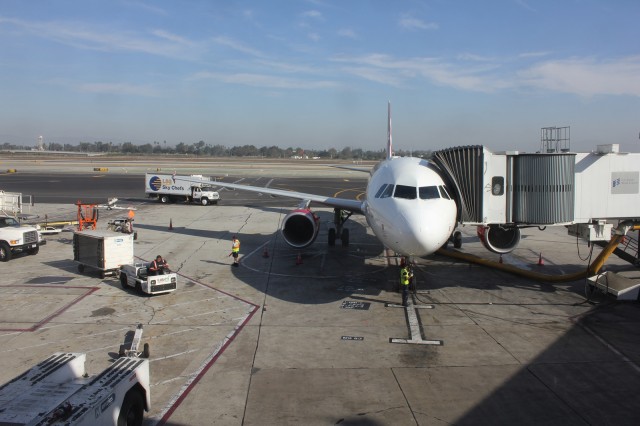
Virgin American Airbus A320 at LAX. Image by David Parker Brown / AirlineReporter.com.
How does Virgin America board? ’“ Virgin American starts with allowing their First Class passengers to board before allowing folks with children and disabled people who need a little more time. Then they move on to Main Cabin Select, which are in the first row of economy and the exit rows so they have more legroom. The Main Cabin Select fare also comes with complimentary food and drinks and one free checked bag. After those two groups, they board the Main Cabin Express group. Ultimately, this is just an add-on that you can purchase to be among the first to board.
Being that I really like to be sit near the front and be able to get off the plane as soon as possible, this fare is quite appealing. Finally, they move on to a group based boarding process, starting with A and moving through the alphabet. I recall on one flight it went groups A-D, but on another it went A-F.
STORY: Flying in Virgin America’s First Class
Hopefully this article can provide some insight the next time you are traveling and are curious about how different airlines board. In the comments, be sure to talk about your boarding experiences and which processes do you like (or hate the most)?
Related links in airline boarding:
 |
This story written by…Colin Cook, Correspondent.Colin is an avid AvGeek who works in finance and is based in the Seattle area. He has an immense passion for aviation and loves to travel as much as possible.
@CRoscoe2121 |






























